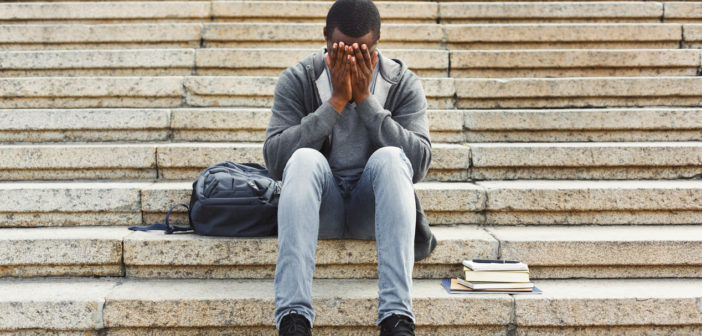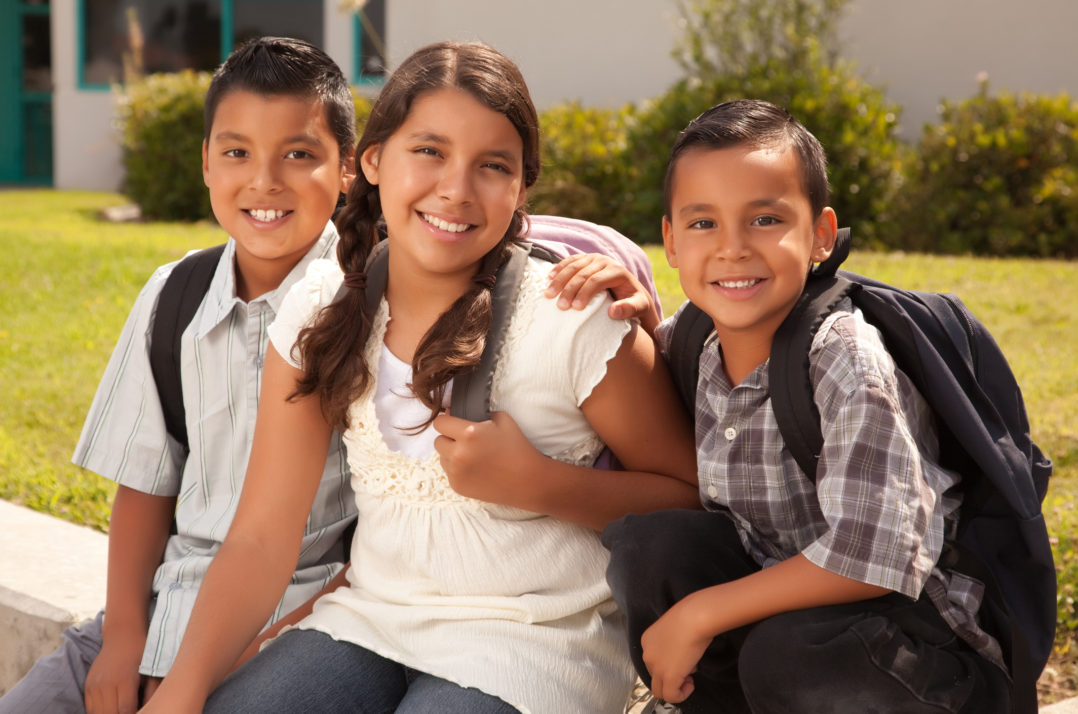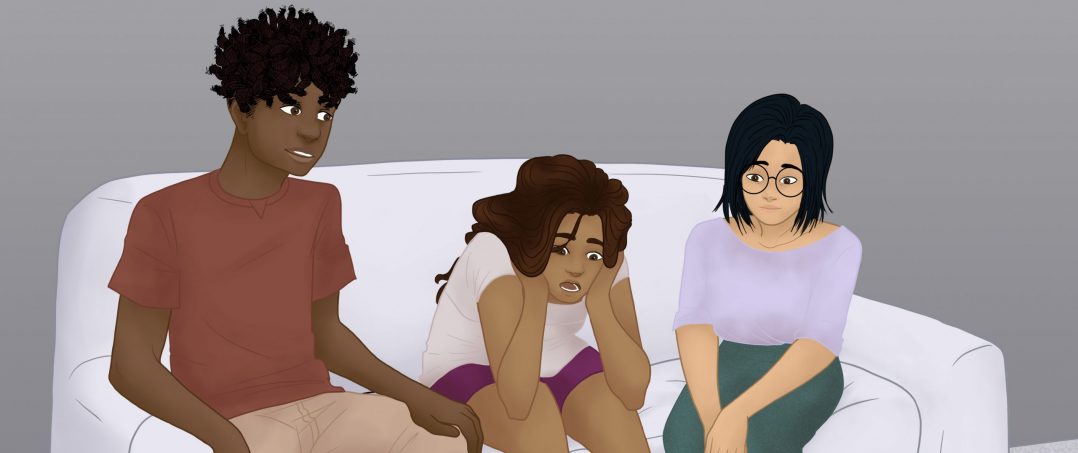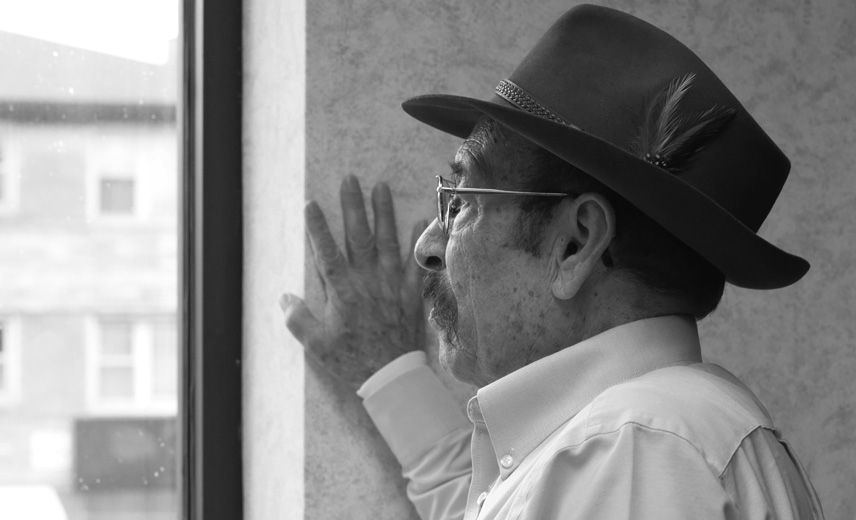America’s Youth in Emotional Crisis: The CDC’s Latest Study on Youth Risk Behavior Shows High Levels of Suicide Among Girls and Youth Identifying as Hispanic and/or LGBTQ+
A new report by the Centers for Disease Control shows that an alarming number of adolescents are engaging in suicidal ideation, and the numbers are especially high among girls, and among youth identifying as Indigenous, Hispanic, multiracial, or LGBTQ+.
A new report by the Centers for Disease Control shows that an alarming number of adolescents are engaging in suicidal ideation, and the numbers are especially high among girls, and among youth identifying as Indigenous, Hispanic, multiracial, or LGBTQ+.
The report, The Youth Risk Behavior Survey Data Summary & Trends Report: 2011–2021, focuses on a decade of research on youth sexual activity, substance use, suicidal thoughts and behaviors, violence, poor mental health, unstable housing, school connectedness, and parental monitoring, while also exploring the data by sex, race and ethnicity, sexual identity, and sex of sexual contacts.
CDC data from 2021 showed “significant increases in the percentage of youth who seriously considered suicide, made a suicide plan, and attempted suicide,” and that was true across all demographic categories. It was up to 22% compared to the 2011 report which showed that 15.8% had seriously considered attempting suicide during the 12 months before the survey. In this latest study, female students were 16% more likely than males to make this consideration, at 30% and 14%, respectively. By race and ethnicity, the youth with the highest rates of ideation were youth identifying as Native American at 27%, followed by youth identifying as multiracial at 24%, youth identifying as white at 23%, youth identifying as Black or Hispanic both at 22%, Native Hawaiian or Pacific Islander at 21%, and youth identifying as Asian at 18%. The rates spiked even higher for youth identifying as LGBTQ+ at 45% compared to 15% among youth identifying as heterosexual. The report noted that nearly 60% of female students and 70% of LGBTQ+ students experienced persistent feelings of sadness and hopelessness and that 10% of female students and 20% of LGBTQ+ students had gone as far as attempting suicide.
“As we saw in the 10 years prior to the COVID-19 pandemic, mental health among students overall continues to worsen, with more than 40% of high school students feeling so sad or helpless that they could not engage in their regular activities for at least two weeks during the previous year—a possible indication of the experience of depressive symptoms,” the report stated. That’s 14% higher than 2011.
“Nearly all indicators of poor mental health and suicidal thoughts and behaviors increased from 2011 to 2021,” the report noted, although it showed no increase in the number of students treated for suicidal injuries.
Contributors to Instability in Mental Health

While the data showed an overall decrease in bullying and risky behaviors involving sex and substances, and a high level of parental monitoring among most youth, there was plenty of alarming data that could help to account for the continued decline in mental health among female students. For example, in 2021, almost 20% of them reported experiencing sexual violence in the past year and 14% had been physically forced to have sex.
Other contributing factors for mental health decline among all students might include unstable housing, not feeling connected at school, and fear of violence. The report notes that a high level of parental monitoring, defined as “parents or other adults in a family most of the time or always knowing where they were going or who they would be with, and school connectedness, which it defines as “the feeling among adolescents that people at their school care about them, their well-being, and their success,” both correlate to decreased sexual risk, substance abuse, experiences with violence, and suicidal thoughts and behavior.
Overall, only 3% of students had experienced unstable housing, although the rates were disproportionately higher for Black and Native American students, as well as among youth identifying as LGBTQ+ who had any same-sex partners. Overall, 7% of students had been threatened or injured by a weapon at school, down about 3% from 2011 among males and unchanged among females. The percentages decreased among Asian and Hispanic students and there was no change among Blacks and whites. However, LGBTQ+ students were more likely than their peers to be threatened or injured in this scenario. And overall, 9% of students had to go to school in the past 30 days because of fear of violence. The rates in this category were especially high among students identifying as Native Americans at 13%, Black at 12%, Hispanic at 11%, and LGBTQ+ at 14%, and females were 3% more likely to stay home than their male counterparts who reported not going at 7%.
Finally, it’s debatable whether school, the setting where 95% of youth spend their daily lives, was a welcoming and safe environment. While white students felt more connected than any other group at 65%, only 61% of all youth surveyed said they felt close to people at school. Females were even less likely to feel that way at 58% compared to 65% among males. Only 54% of Native American and Black youth felt close to people at school and the numbers were only slightly higher among Hispanic youth at 58%. Meanwhile, only 58% of LGBTQ+ youth felt close to someone at school compared to 65% of their heterosexual counterparts.
Recommendations
“These data make it clear that young people in the U.S. are collectively experiencing a level of distress that calls on us to act,” the report said in its key findings section. “Although the primary goal of school is academic learning, they play a key role in shaping mental, physical, and social growth.”
To address this, the CDC made the following recommendations:
- Increase school connectedness across all grades.
- Increase access to needed services by improving school-based services and connecting youth and families to community-based sources of care.
- Implement greater health education for all grades.
The report also recommended that schools reference the CDC’s What Works in Schools program, an evidence-based approach to the above recommendations that have led to improvements in sexual behavior, substance abuse, violence, and missed school due to safety concerns. It also noted that “schools that implemented policies and practices to support LGBTQ+ youth not only saw improvements in health and well-being for young people who identify as lesbian, gay, or bisexual, but also their heterosexual counterparts.”
An Intersectional Perspective

While the ten-year report did not explore the prevalence of these issues at the intersection of race and gender identity, a supplemental study released in April did use unadjusted logistic regression models to explore prevalence across some subgroups from 2019 to 2021. The study, titled Suicidal Thoughts and Behaviors Among High School Students — Youth Risk Behavior Survey, United States, 2021, showed a significant spike in serious consideration of suicide among Black, Hispanic, and white females students. For example, suicide ideation was up 6% among Hispanic females, 6.8% among Black, and 7% among white females, compared to 4.6% among multiracial females, 2.2% among Asian females, and .2% among Native Americans. It also showed a higher increase in suicide attempts requiring medical treatment for multiracial, Black, and Hispanic females, up 3.7%, 1.7%, and 1.1% respectively compared to an increase of .3% among Asian females and .6% among white ones, with no change for Native American, Native Hawaiian, or Pacific Islander females.
While this supplement does not include data on suicidal tendencies at the intersection of race/ethnicity and gender identity, UnidosUS knows Latinx students identifying as LGBTQ+ already are indeed struggling with mental health and safety issues. According to the 2021 UnidosUS fact sheet Latinx LGBTQ+ Students and Their Experiences, 22% of Latinx students identify as LGBTQ+, 40% have experienced assault and/or harassment due to race or gender orientation, 57% feel unsafe at school due to their gender expression, and 35% are likely to miss school because they feel unsafe there. The fact sheet also notes that 70% of these students experience symptoms of generalized anxiety disorder, 64% major depressive disorder, 43% have considered suicide, and 18% have attempted suicide. And a new UnidosUS factsheet on mental health shows that Latino LGBTQ youth are 30% more likely to attempt suicide than non-Latino LGBTQ youth.
“The data shows that youth with intersectional identities, such as students of color who also identify as LGBTQ+ are disproportionately at risk and therefore it is important to recognize their unique experiences in order to equitably address their mental health and offer culturally and linguistically relevant supports and interventions,” says Amalia Chamorro, education policy project director at UnidosUS.
South Florida-based Afro-Latina LGBTQ+ youth human rights advocate Ayari Aguayo says the pandemic contributed to feelings of isolation, as well as exposure to violence and unwanted sexual behavior. She cited societal phenomena such as the hypertextualization of girls of color as contributors to exploitation and low self-esteem, and she fears feelings of sadness and hopelessness are likely to get even worse in a state like Florida where Governor Ron DeSantis has pushed through legislation banning classroom discussions of gender identity and some Black studies curricula, further adding to the fragile mental health of youth who feel further stigmatized.
“It’s all layered with not being in an empowered community, not having the tools, workshops, or the support services,” Aguayo said, adding that during the pandemic, she and her colleagues found they were able to combat these concerns by helping to introduce youth to inspiring characters who had been in similar life situations.
“We brought role models who were courageous and vulnerable, who said, ‘I grew up with abuse and this is how I became resilient, this is what I did to overcome it,’” said Aguayo.
This type of intervention is congruent with CDC study’s goal of maintaining high-quality surveillance systems, conducting, and translating youth supporting scientific research, and helping school systems provide health education for safer, more supportive learning.
In its fact sheets and other policy and advocacy materials, UnidosUS’s policy team encourages schools and districts to fund GSA, ethnic clubs, and staff professional development programs focused on improving mental health and creating diverse and inclusive learning environments. It also urges the Department of Education’s Office of Civil Rights to enforce existing federal laws created to prevent and combat gender and race discrimination. And it also wants to see that same office disaggregate data to reflect multiple identities of students related to race, ethnicity, and gender identity when conducting student-focused research on topics like this one.
A February announcement by the U.S. Department of Education that it had received $188 million from the Bipartisan Safer Communities Act to support mental health and student wellness can help schools provide critical and necessary support. UnidosUS supported the passage of this legislation.

“As the President outlined in his State of the Union address, we must do more to tackle our nation’s growing mental health crisis, which is particularly acute among our youth,” Domestic Policy Advisor to the President Susan Rice said in the U.S. Department of Education’s February 16 announcement.
“Mental health and wellness have profound implications for our students, their academic success, and their overall outcomes, and we know that youth facing mental health challenges are more likely to receive services in a school-based setting,” U.S. Secretary of Education Miguel Cardona said in that same announcement. “The Bipartisan Safer Communities Act represents an unprecedented opportunity to raise the bar for our support of our students, to improve learning conditions in our schools, to expand access to school-based mental health care, and to supercharge efforts across the country to train and hire a pipeline of professionals committed to the wellbeing of our students.”
–Author Julienne Gage is a former UnidosUS Senior Web Content Manager who now serves the organization as a consultant.





